Chrysler 2010 Annual Report Download - page 192
Download and view the complete annual report
Please find page 192 of the 2010 Chrysler annual report below. You can navigate through the pages in the report by either clicking on the pages listed below, or by using the keyword search tool below to find specific information within the annual report.-
 1
1 -
 2
2 -
 3
3 -
 4
4 -
 5
5 -
 6
6 -
 7
7 -
 8
8 -
 9
9 -
 10
10 -
 11
11 -
 12
12 -
 13
13 -
 14
14 -
 15
15 -
 16
16 -
 17
17 -
 18
18 -
 19
19 -
 20
20 -
 21
21 -
 22
22 -
 23
23 -
 24
24 -
 25
25 -
 26
26 -
 27
27 -
 28
28 -
 29
29 -
 30
30 -
 31
31 -
 32
32 -
 33
33 -
 34
34 -
 35
35 -
 36
36 -
 37
37 -
 38
38 -
 39
39 -
 40
40 -
 41
41 -
 42
42 -
 43
43 -
 44
44 -
 45
45 -
 46
46 -
 47
47 -
 48
48 -
 49
49 -
 50
50 -
 51
51 -
 52
52 -
 53
53 -
 54
54 -
 55
55 -
 56
56 -
 57
57 -
 58
58 -
 59
59 -
 60
60 -
 61
61 -
 62
62 -
 63
63 -
 64
64 -
 65
65 -
 66
66 -
 67
67 -
 68
68 -
 69
69 -
 70
70 -
 71
71 -
 72
72 -
 73
73 -
 74
74 -
 75
75 -
 76
76 -
 77
77 -
 78
78 -
 79
79 -
 80
80 -
 81
81 -
 82
82 -
 83
83 -
 84
84 -
 85
85 -
 86
86 -
 87
87 -
 88
88 -
 89
89 -
 90
90 -
 91
91 -
 92
92 -
 93
93 -
 94
94 -
 95
95 -
 96
96 -
 97
97 -
 98
98 -
 99
99 -
 100
100 -
 101
101 -
 102
102 -
 103
103 -
 104
104 -
 105
105 -
 106
106 -
 107
107 -
 108
108 -
 109
109 -
 110
110 -
 111
111 -
 112
112 -
 113
113 -
 114
114 -
 115
115 -
 116
116 -
 117
117 -
 118
118 -
 119
119 -
 120
120 -
 121
121 -
 122
122 -
 123
123 -
 124
124 -
 125
125 -
 126
126 -
 127
127 -
 128
128 -
 129
129 -
 130
130 -
 131
131 -
 132
132 -
 133
133 -
 134
134 -
 135
135 -
 136
136 -
 137
137 -
 138
138 -
 139
139 -
 140
140 -
 141
141 -
 142
142 -
 143
143 -
 144
144 -
 145
145 -
 146
146 -
 147
147 -
 148
148 -
 149
149 -
 150
150 -
 151
151 -
 152
152 -
 153
153 -
 154
154 -
 155
155 -
 156
156 -
 157
157 -
 158
158 -
 159
159 -
 160
160 -
 161
161 -
 162
162 -
 163
163 -
 164
164 -
 165
165 -
 166
166 -
 167
167 -
 168
168 -
 169
169 -
 170
170 -
 171
171 -
 172
172 -
 173
173 -
 174
174 -
 175
175 -
 176
176 -
 177
177 -
 178
178 -
 179
179 -
 180
180 -
 181
181 -
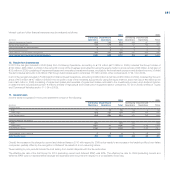 182
182 -
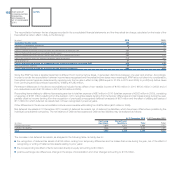 183
183 -
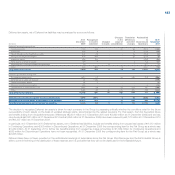 184
184 -
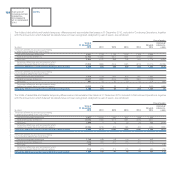 185
185 -
 186
186 -
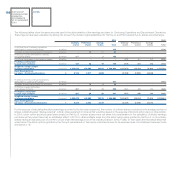 187
187 -
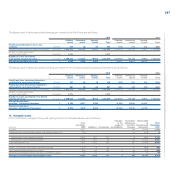 188
188 -
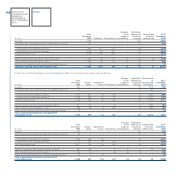 189
189 -
 190
190 -
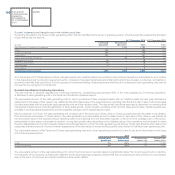 191
191 -
 192
192 -
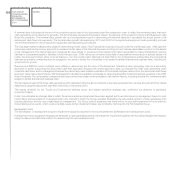 193
193 -
 194
194 -
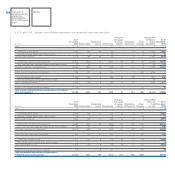 195
195 -
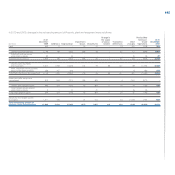 196
196 -
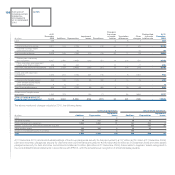 197
197 -
 198
198 -
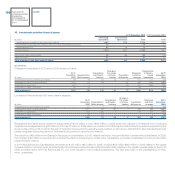 199
199 -
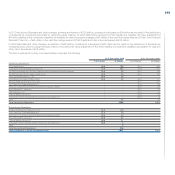 200
200 -
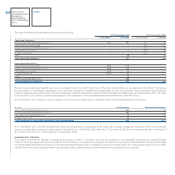 201
201 -
 202
202 -
 203
203 -
 204
204 -
 205
205 -
 206
206 -
 207
207 -
 208
208 -
 209
209 -
 210
210 -
 211
211 -
 212
212 -
 213
213 -
 214
214 -
 215
215 -
 216
216 -
 217
217 -
 218
218 -
 219
219 -
 220
220 -
 221
221 -
 222
222 -
 223
223 -
 224
224 -
 225
225 -
 226
226 -
 227
227 -
 228
228 -
 229
229 -
 230
230 -
 231
231 -
 232
232 -
 233
233 -
 234
234 -
 235
235 -
 236
236 -
 237
237 -
 238
238 -
 239
239 -
 240
240 -
 241
241 -
 242
242 -
 243
243 -
 244
244 -
 245
245 -
 246
246 -
 247
247 -
 248
248 -
 249
249 -
 250
250 -
 251
251 -
 252
252 -
 253
253 -
 254
254 -
 255
255 -
 256
256 -
 257
257 -
 258
258 -
 259
259 -
 260
260 -
 261
261 -
 262
262 -
 263
263 -
 264
264 -
 265
265 -
 266
266 -
 267
267 -
 268
268 -
 269
269 -
 270
270 -
 271
271 -
 272
272 -
 273
273 -
 274
274 -
 275
275 -
 276
276 -
 277
277 -
 278
278 -
 279
279 -
 280
280 -
 281
281 -
 282
282 -
 283
283 -
 284
284 -
 285
285 -
 286
286 -
 287
287 -
 288
288 -
 289
289 -
 290
290 -
 291
291 -
 292
292 -
 293
293 -
 294
294 -
 295
295 -
 296
296 -
 297
297 -
 298
298 -
 299
299 -
 300
300 -
 301
301 -
 302
302 -
 303
303 -
 304
304 -
 305
305 -
 306
306 -
 307
307 -
 308
308 -
 309
309 -
 310
310 -
 311
311 -
 312
312 -
 313
313 -
 314
314 -
 315
315 -
 316
316 -
 317
317 -
 318
318 -
 319
319 -
 320
320 -
 321
321 -
 322
322 -
 323
323 -
 324
324 -
 325
325 -
 326
326 -
 327
327 -
 328
328 -
 329
329 -
 330
330 -
 331
331 -
 332
332 -
 333
333 -
 334
334 -
 335
335 -
 336
336 -
 337
337 -
 338
338 -
 339
339 -
 340
340 -
 341
341 -
 342
342 -
 343
343 -
 344
344 -
 345
345 -
 346
346 -
 347
347 -
 348
348 -
 349
349 -
 350
350 -
 351
351 -
 352
352 -
 353
353 -
 354
354 -
 355
355 -
 356
356 -
 357
357 -
 358
358 -
 359
359 -
 360
360 -
 361
361 -
 362
362 -
 363
363 -
 364
364 -
 365
365 -
 366
366 -
 367
367 -
 368
368 -
 369
369 -
 370
370 -
 371
371 -
 372
372 -
 373
373 -
 374
374 -
 375
375 -
 376
376 -
 377
377 -
 378
378 -
 379
379 -
 380
380 -
 381
381 -
 382
382 -
 383
383 -
 384
384 -
 385
385 -
 386
386 -
 387
387 -
 388
388 -
 389
389 -
 390
390 -
 391
391 -
 392
392 -
 393
393 -
 394
394 -
 395
395 -
 396
396 -
 397
397 -
 398
398 -
 399
399 -
 400
400 -
 401
401 -
 402
402
 |
 |

191
In the Comau sector, the sensitivity analysis was carried out on the residual goodwill, which is mainly allocated to the Pico cash-generating unit, but no
matters arose to indicate that this may be significantly impaired.
The results obtained for the other sectors and related sensitivity analyses also confirmed the absence of significant impairment losses.
Goodwill classified as Discontinued Operations
The vast majority of goodwill classified as Discontinued Operations, representing approximately 97% of the total classified as Discontinued Operations and
amounting to €1,794 million, relates to the Agricultural and Construction Equipment sector, where the cash-generating units considered for the testing of
the recoverability of the goodwill are generally the product lines of the sectors themselves.
The recoverable amount of the cash-generating units to which goodwill and other intangible assets with an indefinite useful life have been allocated is
determined on the basis of their value in use, defined as the discounted value of the expected future operating cash flows at a rate of return that incorporates
the risks associated with the particular cash-generating units as of the valuation date. The discounted cash flows approach is dependent on several critical
management assumptions, including estimates of future sales growth, gross margins, operating costs, terminal value growth rates, capital expenditures,
changes in working capital requirements and the weighted average cost of capital (discount rate). More in particular, from 2006 to 2009, the Agricultural
and Construction Equipment sector, managed its business at the brand level: Case IH and New Holland for Agricultural Equipment, Case and New Holland
Construction for Construction Equipment; and Financial Services. In 2010, CNH began to manage its business at the Agricultural Equipment, Construction
Equipment, and Financial Services level. The cash generating units to which goodwill has been allocated consist of the following product lines:
Amount allocated to goodwill
(€ million) at 31 December 2010
Agricultural equipment 1,280
Construction equipment 419
Financial Services 95
Total 1,794
To determine the recoverable amount of these cash-generating units, the sector relied on discounted cash flows and, as a further method, on market
multiples. In particular, the sector used the discounted cash flows approach as the primary approach for measuring the value in use of the Equipment
Operations businesses, while used the total asset market multiples approach as the primary approach for measuring the fair value of the Financial Services
reporting unit.
Expected cash flows used under this method are developed in conjunction with the budgeting and forecasting process of the sector and represent the most
likely amounts and timing of future cash flows based on the long range plan of CNH. The long range plan, which is updated annually and is reviewed by
the senior management of CNH, includes, among other things, the expected benefits of planned manufacturing and product development actions as well
as expectations regarding product pricing, market share and commodity costs, consistent with the assumptions reflected in the Fiat Group’s 2010-2014
Strategic Plan. The sector uses eight years of expected cash flows as management believes that this period generally reflects the underlying market cycles
for its businesses.
The discount rates used in the discounted cash flows approach are an estimate of the rate of return that a market participant would expect of each cash-
generating unit. To select an appropriate rate for discounting the future earnings stream, a review was made of short-term interest rates and the yields of
long-term corporate and government bonds, as well as the typical capital structure of companies in the industry. The discount rates used for each cash-
generating unit were suitably increased to take account of the risk inherent in the cash flow projections, as well as the risk level that would be perceived by
a market participant. Considering the above mentioned factors, the following discount rates before taxes as of 31 December 2010 were selected by CNH:
2010 2009
Agricultural equipment 17.0% 20.8% - 21.1%
Construction equipment 17.4% 19.2%
